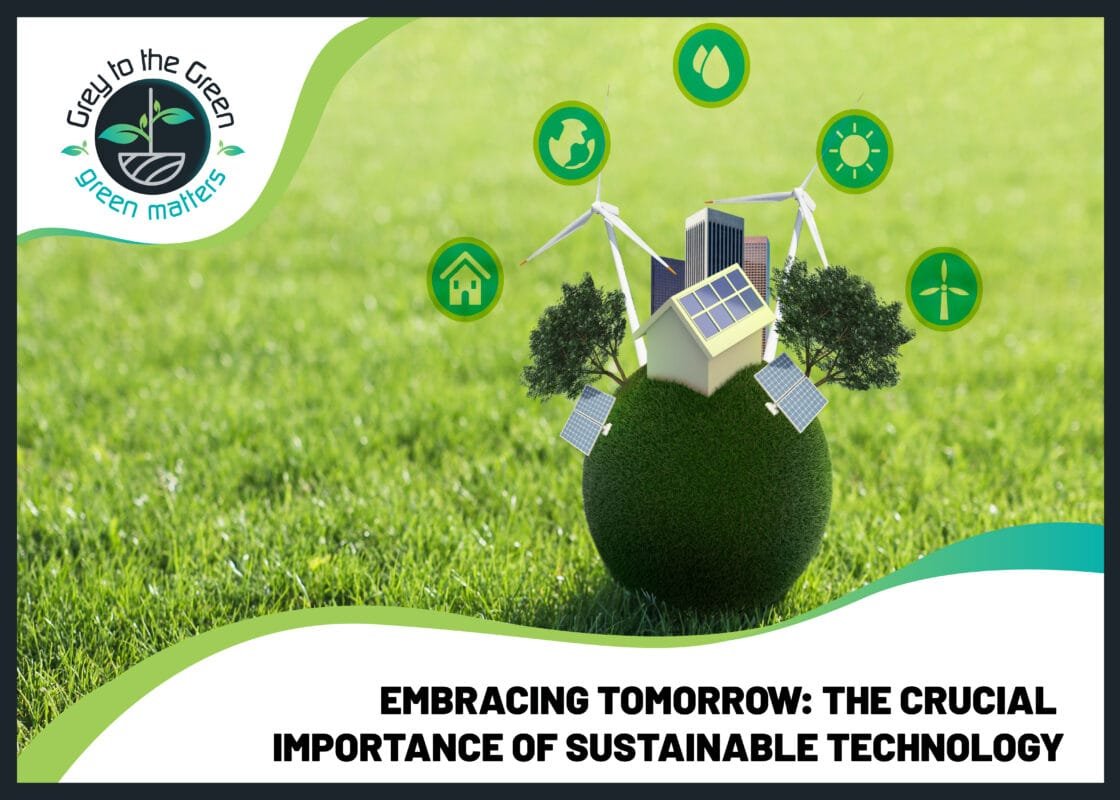Sustainable technology, often referred to as “sustainability tech” or “clean tech,” encompasses innovative solutions and practices designed to address environmental, economic, and social challenges while minimizing their impact on the planet. In today’s world, where environmental issues, resource depletion, and climate change pose pressing concerns, sustainable technology plays a pivotal role. It offers a pathway towards a more harmonious coexistence with nature, fostering responsible consumption, reducing greenhouse gas emissions, and promoting resource efficiency. Sustainable technology empowers individuals, businesses, and governments to pursue development and growth while safeguarding the health of the planet and the well-being of future generations.
Benefits of Sustainable Technology
The adoption of sustainable technology brings forth a multitude of benefits across environmental, economic, and social dimensions. Environmentally, it reduces carbon emissions and minimizes the exploitation of finite resources, promoting biodiversity and ecological balance. On the economic front, sustainable tech often leads to cost savings through energy efficiency and resource optimization, bolstering long-term economic resilience. Socially, it fosters innovation, job creation, and equitable access to resources, addressing societal disparities. By prioritizing sustainable technology, we pave the way for a brighter future where environmental stewardship, economic prosperity, and social equity coexist harmoniously. It’s an essential step towards a sustainable and thriving planet.
Renewable Energy Solutions

| SUSTAINABLE ENERGY TECHNOLOGY | ROLE IN SUSTAINABLE ENERGY GENERATION |
| Solar Power | Harnesses energy from the sun through photovoltaic panels or solar thermal systems. Provides clean, renewable electricity, reducing greenhouse gas emissions and reliance on fossil fuels. |
| Wind Power | Captures kinetic energy from wind using wind turbines. Converts wind energy into electricity without producing greenhouse gasses, contributing to a carbon-neutral energy mix. |
| Hydro Power | Utilizes the energy of flowing or falling water to generate electricity. Offers a consistent and reliable source of renewable energy, with minimal environmental impact when planned and managed sustainably. |
These technologies play crucial roles in sustainable energy generation by reducing carbon emissions, decreasing reliance on non-renewable resources, and fostering a cleaner and more sustainable energy landscape.
Green Building Practices
Sustainable architecture and construction techniques prioritize eco-friendly design and building practices, promoting environmental stewardship. These methods incorporate energy-efficient materials, renewable energy sources, and innovative designs that reduce a structure’s carbon footprint. Sustainable buildings often feature efficient insulation, green roofs, and natural lighting to conserve resources. Additionally, they employ recycled and locally-sourced materials, minimizing transportation emissions. Such construction practices not only benefit the environment but also enhance occupant comfort, health, and well-being. By minimizing waste, conserving energy, and using sustainable materials, sustainable architecture and construction are essential components of a more environmentally responsible future.
Smart Cities and IoT
The Internet of Things (IoT) is revolutionizing urban environments by enhancing sustainability in various ways. IoT devices, sensors, and data analytics are being used to optimize resource management, reduce energy consumption, and enhance overall city efficiency. Smart streetlights adjust lighting levels based on traffic and weather conditions, saving energy. Waste management systems use sensors to optimize trash collection routes, reducing fuel consumption and emissions. Additionally, IoT enables real-time monitoring of air quality and water usage, facilitating proactive measures for environmental protection. By fostering data-driven decision-making, IoT technology is instrumental in creating greener, more sustainable urban environments.
Clean Transportation
The adoption of electric vehicles (EVs) and the improvement of public transportation systems are pivotal steps in reducing emissions and promoting sustainability. Electric vehicles produce zero tailpipe emissions, significantly lowering greenhouse gas output compared to traditional gasoline-powered cars. Moreover, efficient public transportation systems reduce the number of individual vehicles on the road, leading to decreased traffic congestion and emissions. Investments in electric buses and trains further contribute to eco-friendly urban mobility. These sustainable transportation solutions not only enhance air quality but also reduce our dependence on fossil fuels, ultimately fostering a cleaner and greener future for urban environments.
Waste Reduction and Recycling

- Advanced recycling technologies: Innovations like AI-powered sorting systems improve recycling efficiency by accurately identifying and sorting materials.
- Waste-to-energy solutions: Technologies such as anaerobic digestion and incineration convert waste into energy, reducing landfill usage.
- Smart waste management: IoT-based sensors monitor waste bins, optimizing collection routes and reducing unnecessary pickups.
- Circular economy platforms: Online platforms connect businesses and consumers with recycled or upcycled products, promoting sustainable consumption.
- 3D printing with recycled materials: This technology transforms recycled plastics and metals into new products, reducing the need for virgin resources.
- Composting solutions: Automated composting machines turn organic waste into valuable compost, minimizing landfill-bound organic materials.
Challenges and Innovations
While sustainable technology offers numerous benefits, several challenges hinder its widespread adoption. These include initial costs, regulatory hurdles, and resistance to change. However, innovative solutions are emerging to overcome these obstacles:
- Financing models: Sustainable tech companies are developing creative financing options like pay-as-you-save and green bonds to make adoption more accessible.
- Regulatory support: Governments are incentivizing sustainable practices through tax credits and subsidies.
- Collaboration: Public-private partnerships are fostering innovation and research, accelerating the development of sustainable technologies.
- Blockchain for transparency: Blockchain is being used to trace the supply chain of sustainable products, ensuring their authenticity and origin.
- Awareness and education: Increased awareness campaigns are helping consumers and businesses understand the long-term benefits of sustainable tech adoption.
Government Policies and Incentives
Policies and incentives play a pivotal role in promoting the adoption of sustainable technology by providing a supportive framework for businesses and individuals. Here’s how they contribute:
- Financial incentives: Governments offer tax credits, subsidies, and grants to make sustainable technologies more affordable, encouraging investment in renewable energy, electric vehicles, and energy-efficient appliances.
- Regulatory standards: Stringent environmental regulations push industries to adopt cleaner, sustainable practices, reducing pollution and emissions.
- Research and development funding: Public funds are allocated to research institutions and startups focused on sustainable tech, fostering innovation.
- Emission reduction targets: Governments set ambitious goals to reduce carbon emissions, prompting industries to transition to cleaner energy sources and sustainable practices.
- Consumer awareness: Policies often include public awareness campaigns to educate consumers about the benefits of sustainable tech, driving demand.
By aligning policies and incentives, nations can accelerate the shift towards sustainable technology, mitigating environmental impacts and ensuring a greener future.
The Future of Sustainable Technology
Emerging trends in sustainable technology are shaping a greener and more efficient future. Here’s a glimpse of what lies ahead:
- Circular Economy: The concept of a circular economy is gaining momentum. It emphasizes recycling, reusing, and reducing waste, making products and processes more sustainable.
- Green Transportation: Electric and autonomous vehicles are on the rise, reducing emissions and improving transportation efficiency.
- Smart Cities: Integrated technologies, like IoT and AI, are transforming urban landscapes, optimizing resource use, and enhancing quality of life.
- Renewable Energy: Advancements in solar, wind, and hydropower technologies promise cleaner and more accessible energy sources.
- Biotechnology: Sustainable agriculture and eco-friendly materials are being developed through biotechnology.
- Climate Adaptation Tech: Technologies for climate change mitigation and adaptation are gaining traction.
- Consumer Demand: Growing environmental consciousness among consumers is driving sustainable product development.
The future of sustainable technology is bright, with innovations like these paving the way for a more environmentally friendly and sustainable world. For more insights and products related to sustainable technology, visit GreytotheGreen.
Conclusion
The importance of sustainable technology cannot be overstated. It’s not just about embracing innovation; it’s about securing a greener and more sustainable future for our planet. Individuals, businesses, and policymakers all play critical roles in this journey.
Individuals: By making sustainable choices in our daily lives, from energy-efficient appliances to eco-friendly transportation, we contribute to a healthier planet. Explore sustainable solutions like Bugster and Checkmite to make a positive impact.
Businesses: Embracing sustainable technology isn’t just an ethical choice; it’s also a smart business move. Sustainable practices can reduce costs, enhance brand reputation, and drive innovation. Invest in sustainable solutions to lead the way in your industry.
Policymakers: Crafting and implementing policies that promote sustainable technology is vital. Incentives, regulations, and investments in sustainable infrastructure can accelerate the transition to a greener future.
Together, we can harness the power of sustainable technology to combat climate change, reduce environmental impact, and create a better world for future generations. Visit GreytotheGreen to discover more sustainable products and solutions and join the movement for the Importance of Sustainable Technology.














